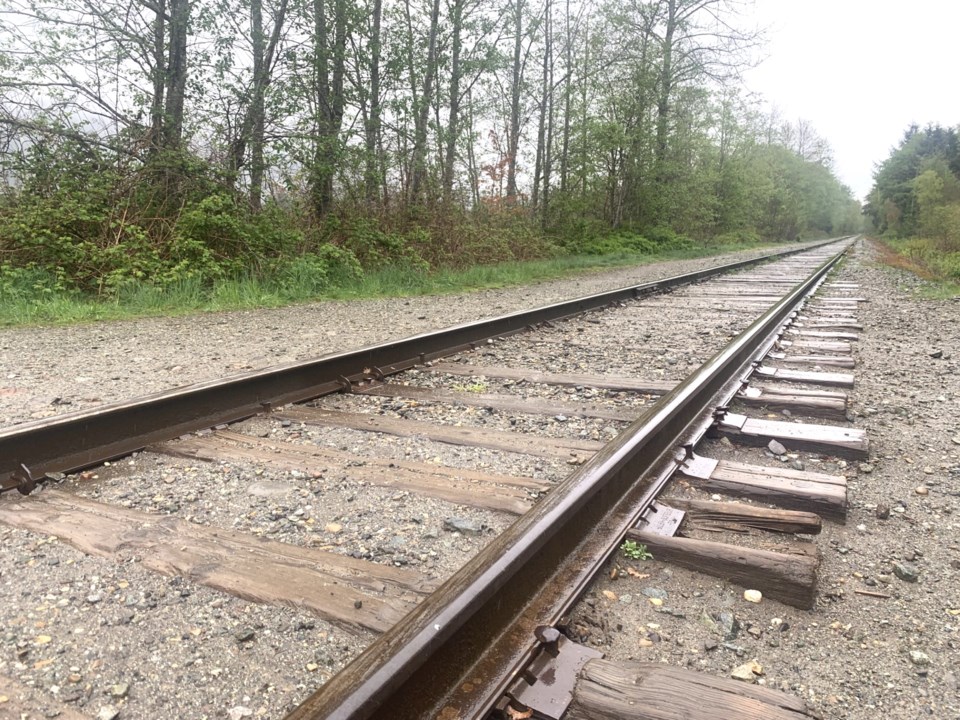CN police officers have been stopping people coming and going from the Skwelwil'em Squamish Estuary and warning them that crossing the tracks is unsafe and illegal.
A spokesperson for CN told The Squamish Chief that enforcement happens on an ongoing basis.
The “CN Police works closely with our neighbouring communities to ensure everyone is aware of the dangers of trespassing on the CN right-of-way and encroaching near rail infrastructure,” said Ashley Michnowski, in a written statement.
She said that this past week officers patrolling through the District of Squamish, saw that "many community members were not being safe and were crossing over the tracks at locations not designated to cross," she added.
"The CN Police team educated many community members of the dangers of trespassing on railway property and that tickets and fines could occur, but worse yet, loss of life. We will continue to work with District of Squamish staff to remind the community of the dangers around the railway."
Michnowski noted that Rocky Mountaineer will run through Squamish on Saturday, April 27, as the train travels between Vancouver and Jasper via Whistler and Quesnel.
"CN Police focuses on education, engineering, and enforcement to help protect public safety along our railway crossings.
CN Police
Enforcement has been conducted by CN police officers.
CN has its own police force. Its constables hold all the powers of a peace officer under the Railway Safety Act, "including those powers vested through the Criminal Code of Canada, to enforce violations occurring on or within 500 metres (550 yards) of CN’s railway network throughout Canada, in so far as the enforcement relates to the protection of property owned, possessed, or administered by the railway as well as the protection of persons while on CN property," reads the CN website.
While at least one local, who wrote to The Squamish Chief in a letter to the editor, believed she was stopped by local Mounties, Staff Sgt. Gareth Bradley of the Sea to Sky RCMP told The Squamish Chief that local officers don't make a habit of conducting enforcement on the tracks, as they are usually out answering service calls.
District perspective
A spokesperson for the District said no one from the municipality has asked CN for its officers to enforce rail trespassing adjacent to the Squamish Estuary.
However, District staff were informed of CN's concerns.
"CN’s concerns were heightened because of recent CN Police patrols that witnessed a high number of people accessing the tracks in the area. The section of rail in question is active track between Squamish Terminals and the rail yard, and we appreciate that CN’s actions are safety driven," said the District's Rachel Boguski.
"The District will seek to participate in conversations with CN, Wildlife Management Area managers, and the various landowners adjacent to the CN tracks to pursue a sanctioned pedestrian rail crossing(s)," Boguski added, in a written statement.
"There is shared recognition of the Squamish Estuary’s value to the community. Enabling safe, responsible access to the nature trails for environmental education and light recreation purposes on designated trails in accordance with the Skwelwil’em Squamish Estuary Wildlife Management Plan is an outcome the District encourages."
CN provided the following tips for safety around railway tracks:
•Stay Off Tracks
Never walk, cycle or drive along railway tracks. It’s hard to judge how far away a train is or what speed it’s travelling at. Trains can go as fast as 160 kilometres per hour and can take up to two kilometres to come to a complete stop. That’s the length of 18 football fields.
• Keep Off of Railway Property
Railway yards, tunnels and bridges are all private property. If you are caught trespassing on them, you could be fined up to $50,000. But it isn’t just illegal to trespass on railway property—it’s extremely dangerous. Railway tunnels and bridges are often only slightly wider than the rails, leaving little or no room for you if a train does come along.
•Use Designated Railway Crossings
Always cross railway tracks at designated crossings. Trying to cross tracks anywhere else could be deadly. Remember, trains can come at any time, from either direction and on any track. They also don’t always run on a set schedule.
•Keep Your Distance
Trains can overhang the tracks by as much as one metre on each side. They can also carry loads that are wider than the railway cars themselves. So, stay clear. You could also get hit by chains, straps or other equipment swinging loose from the train if you are too close.
Go to CN's Be Rail Smart page for more educational materials, safety tips and other information.



